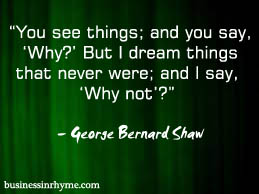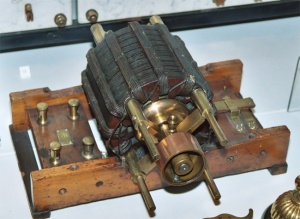“How come?” You might ask. “Is it even possible, simultaneously, but independently come to a pretty much same idea?”
It’s a tough question. Yet through history there are many evidences of multiple discoveries, especially in science, where researchers independently came to same conclusions and results. For example, the case of electromagnetism: Joseph Henry, lesser known American scientist and engineer, discovered the electromagnetic phenomenon of self-inductance. He also discovered mutual inductance, independently of Michael Faraday, but Faraday was the first to publish his results. In later years, two scientists did meet and collaborated but in the scientific world Faraday reaped all credits and praise.
Oxygen, chemical element was discovered independently by Carl Wilhelm Scheele, in Uppsala, in 1773 or earlier, and Joseph Priestley in Wiltshire – yet the Priestley took the credits since he managed to publish his work first. Antoine Lavoisier, a French chemist, also discovered oxygen in 1775, was the first to recognize it as an element, and coined its name “oxygen” – which comes from a Greek word – meaning “acid-former”.
But this kind of phenomena is not limited to scientific work only. In her newly published book, Elizabeth Gilbert shares her own experience – when two people come to pretty much same idea – even when it comes to writing a novel. She had an amazing story for a novel and she wanted to write it for years. During that time a lot of personal and family changes happened in her life and it simply kept her from completely devoting to writing. And all the time she struggled. One day she accidentally finds out that a friend of hers and a fellow writer, Ann Patchett, came to pretty much same idea about the novel (the plot and geographical location just resembled too much). Her friend manages to publish the story with noticeable success and at that particular moment she new that somehow it wasn’t ‘her novel’ and that idea simply found other and better conditions to flourish. She further notes:
The worst and most destructive conclusion I could’ve drawn was that Ann Patchett had stolen my idea. That would have been absurd, because Ann had never even heard of my idea…People convince themselves that they have been robbed, when they have not, in fact been robbed. Such thinking comes from scarcity – from a belief that the world is a place of dearth and that there will never be enough of anything to go around.
And I completely agree with this point of view. We do live in the ocean of ideas. Especially in the Internet era we have almost limitless access to acquired knowledge and information resources. And every one of us is a fishermen. Each day, each minute we try to catch new ideas and make them work for us. But like with every fishing process:
- are we patient enough to wait for the right catch?
- is our ‘fishing rod’ strong enough to sustain even the biggest catch?
- and do we have a developed plan what shall we do with our catch – if we are not fast enough it might just jump over the deck back to the sea!
In other words – even coming to a good idea is usually the easy part. But the conditions, our skills, our determination and devotion to a process will ultimately determine if our idea is going to fruition into something valuable or maybe somewhere, in the other part of the world, someone else has invested more energy, time and other resources to implement similar idea. Each idea has to be welcomed, nourished in such conditions that it has all that it needs to grow.
What I truly believe is that the idea cannot be stolen. Actually that exact fear that we might not be the first is keeping us from our ‘best creative self’. What we can do is to try strategically to position ourselves and our idea and prepare in advance for the work ahead: along the way reexamine our objectives – it will help us stay on the course with our creative project and make important decisions.











